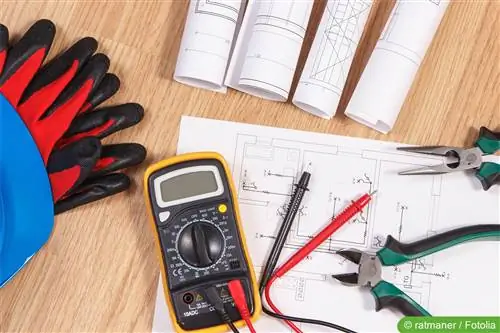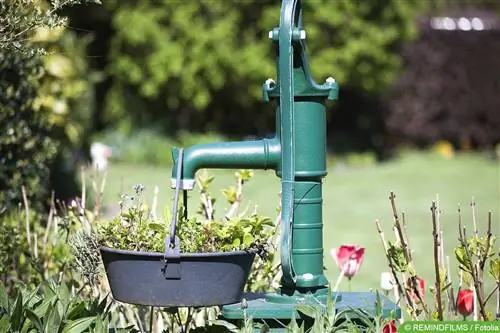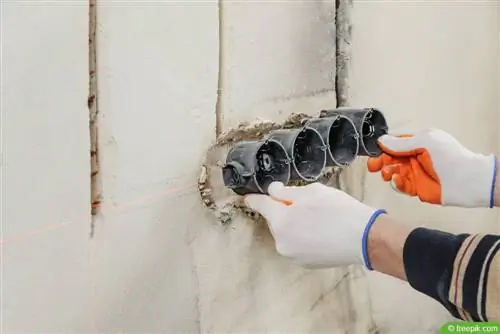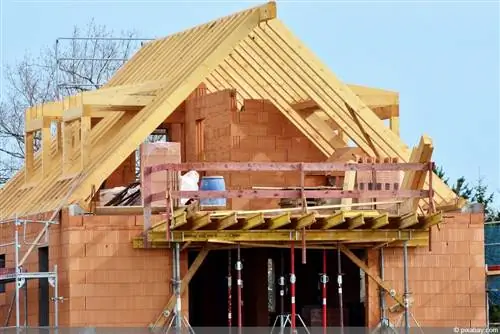- Author admin [email protected].
- Public 2023-12-17 03:39.
- Last modified 2025-01-24 12:45.
If a cable in the house or apartment is defective, you can usually only tell because some electrical appliances no longer work. Then you should start looking for the error. How this error location works exactly can be found here.
A defective cable in the wall can have dramatic consequences. This can lead to the wall and also the building starting to burn. It is therefore urgently advisable to track down the defect.
Cable error
If connected devices or sockets no longer work, there is a high probability that there is an error or defect in the cable. The only problem is that the cables in the house are built into the walls, so visual inspection is practically impossible. Consequently, it would be an unreasonable effort to pry open the entire wall to determine the route of the cable. It is much easier and more convenient to look for defects from the outside, so to speak. Such fault location is possible with the right equipment. Once the fault has been found, all that remains is to open a small area of the wall and repair the fault. The following devices are suitable for troubleshooting:
- Line locator
- Cable Fault Locator
- Measuring helper
Such devices can be bought in stores from around 30 euros. The price depends largely on the features of the device, i.e. on what the device can do.
Tip:
You can also locate a fault in a cable harness yourself, but since troubleshooting usually requires an electrician, a specialist should be entrusted with the task right from the start.
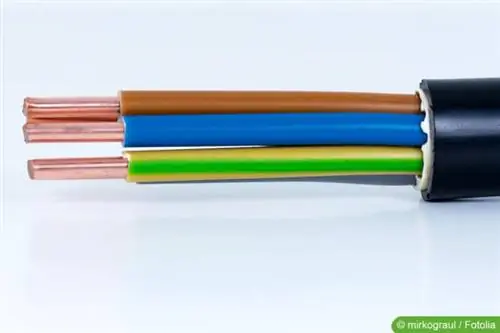
How it works
The cable run in the wall is normally not visible from the outside. Consequently, its exact location must first be sought. Identifying the route of the cable is important in order to be able to find exactly the point where it may be defective or damaged. Cable locators help to locate the cable in the wall. The best way to do this is as follows:
- Define line region
- The probability is high that the fault will be found in a power line in the immediate vicinity
- Starting at the socket into which the device is plugged in, the wall is then scanned with the search device
- the device recognizes the route of the line, which you should roughly remember
- Once the line is located, concrete fault location can begin
- A cable fault locator is usually used for this
Note:
The highlight of power detectors and cable fault locators is that they can, so to speak, see into the wall without having to open it.
Causes
The cause of a defective cable can be very different. Most of the time there is a mistake that was made during installation or it is a material defect. The following errors and defects may occur:
- Short circuit in the wall
- Cable break
- Earth fault
- Braising the cable sheathing
Note:
A special case is an underground cable that runs in the garden, for example. In order to find the error here, you definitely need a professional underground cable locator, which you can borrow.
Electrical device fault location
Of course, an electrical device also contains a lot of cables that can be defective. In order to be able to localize the error, a distinction must be made between the power supply cable on the device and the cables built into the device, i.e. the circuit. In the case of external power supply cables, visual inspection alone often produces a result. It is particularly important to pay attention to any damage or unusual kinks in the cable. You should also carefully examine whether the insulating layer is intact throughout or whether there are already uninsulated strands. Damage to the power cable of an electrical device often occurs at the point directly at the plug or at the transition into the interior of the device.

If there is damage to the cables built into the body of the device, the matter is a little more complicated. The first thing that matters is that the body can actually be opened, which is no longer the case with every device. However, if it can be opened, you should first carry out a visual inspection and pay particular attention to loose cables. A loose cable end always indicates that a connection is interrupted and the device therefore no longer works. If the error cannot be determined through visual inspection alone, we recommend using a voltage tester to check whether there is actually voltage on all cables in the device.
Repair
The first step has been taken, so to speak, by locating the error. Once the error has been located, the next step is to correct it. To do this, the wall must definitely be opened. In other words: you hit the wall at the relevant point with a hammer and chisel. With just a little technical skill, you can do this yourself as a layperson. On the other hand, as a layperson you should definitely keep your hands off the cable harness itself. In order to avoid unpleasant surprises later, a defect should only be repaired byspecialist personnel. As a rule, these will beElectriciansorElectrical installers. In most cases, onlytrained expertscan identify exactly which error is present. Anelectricianis usually also needed when it comes to fixing a cable fault in an electrical device. As a layperson, lending a hand can belife-threatening.
Special case of underground cable

Since an underground cable is usually buried deep in the ground and cannot be easily exposed, a search device must also be used here that can see through the ground, so to speak. Various measurement techniques are used to help localize faults in copper or aluminum cables. The devices used for this are relatively expensive to purchase, which is why usually only companies that specialize in these localizations are equipped with them.

